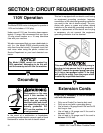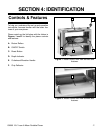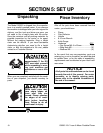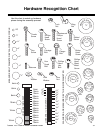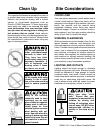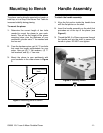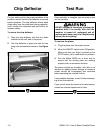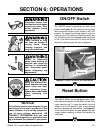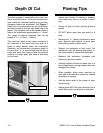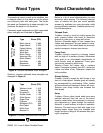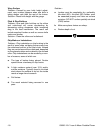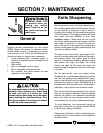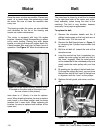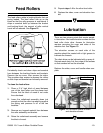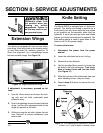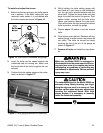
G0505 12
1
⁄2" Lean & Mean Portable Planer
-14-
Depth Of Cut
The planing depth is controlled by the crank han-
dle on top of the planer. Turning the handle clock-
wise raises the cutterhead and turning it counter-
clockwise lowers the cutterhead. See Figure 7.
Depth-of-cut is read directly from the inch/millime-
ter scale located on the top, right-hand side of the
planer. One complete turn of the handle raises or
lowers the cutterhead approximately
5
⁄64'' (2mm).
The range of material thickness that can be
planed is
3
⁄16'' - 6'' (5mm - 152mm).
The maximum depth-of-cut varies according to
the hardness of the wood and how wide of a
board is being passed under the cutterhead.
Generally, we recommend a maximum depth of
no more than
1
⁄32". A series of light cuts will give a
better end result than trying to take off too much
material in a single pass, plus there is less strain
on the motor.
Figure 7. Depth of cut scale and indicator.
Depth Of Cut Indicator
• Inspect your lumber for twisting or cupping,
and surface one face on a jointer if neces-
sary.
• Scrape all glue off when planing glued-up
panels.
• DO NOT plane more than one piece at a
time.
• Remove only
1
⁄32'' (.8mm) of material on each
pass. Remove less material on each pass
when planing wide or dense stock.
• Support the workpiece on both ends. Get
assistance if you are planing long lumber, or
use roller stands to support the workpiece.
• Measure the workpiece thickness with
calipers to get exact results.
• Carefully inspect all stock to make sure it is
free of large knots or foreign objects that may
damage your blades.
• When possible, plane equal amounts on
each side of the board to reduce the chance
of twisting or cupping.
• Use the entire width of the planer to wear
knives evenly.
• Always plane WITH the grain direction of the
wood. Never plain cross-grain or end-grain.
Planing Tips



